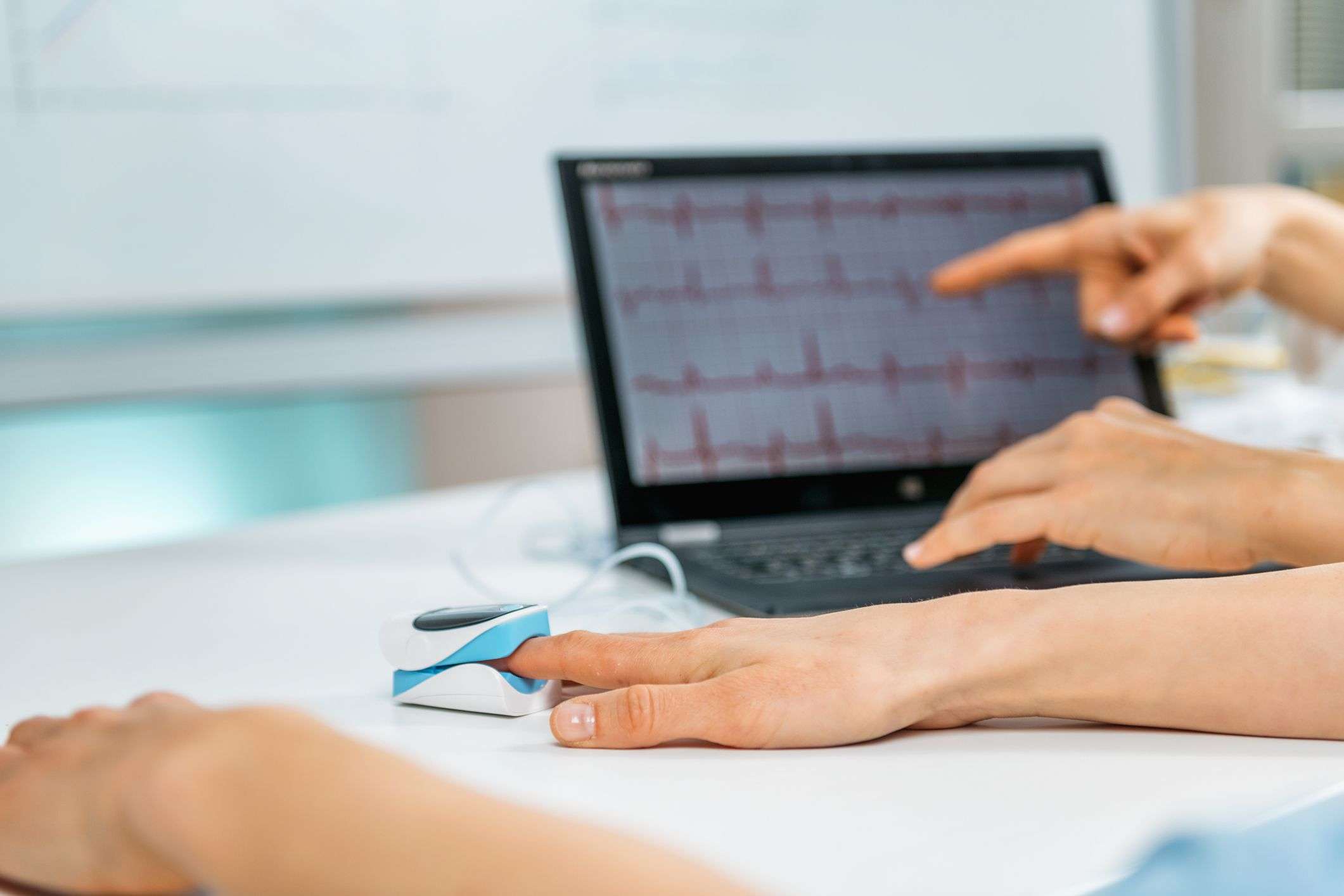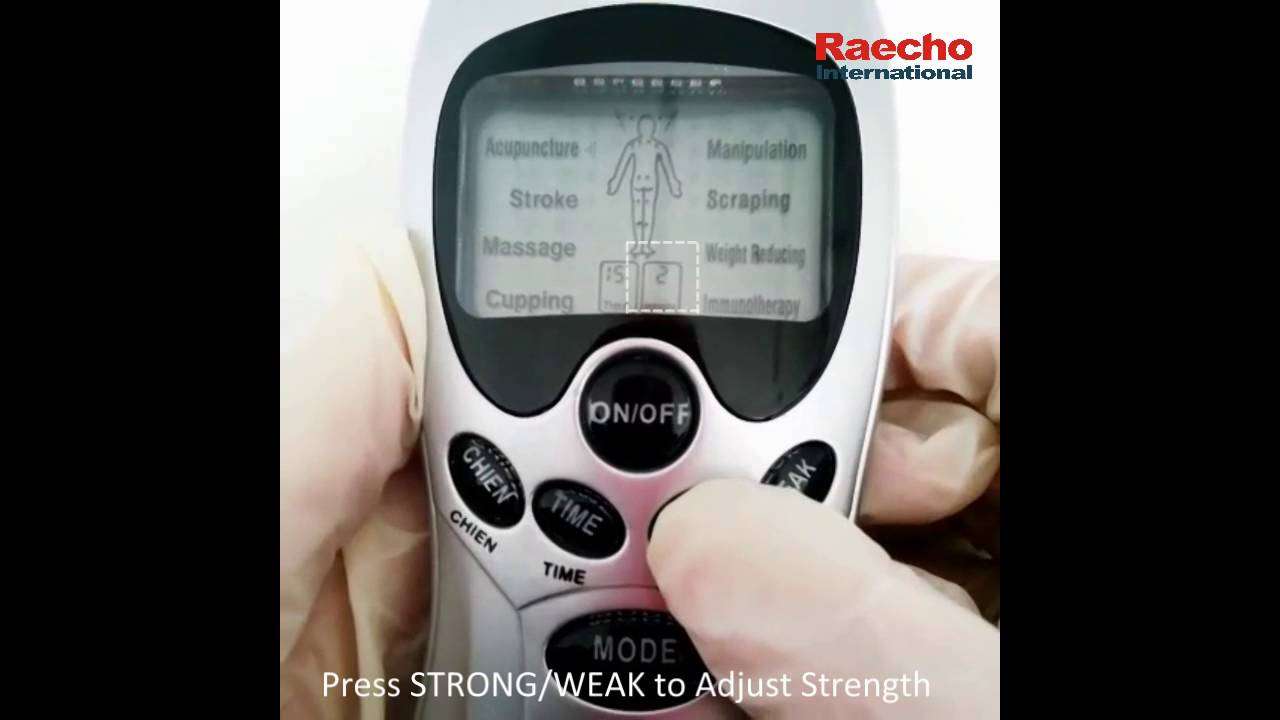Looking for alternative ways to manage anxiety? Biofeedback may help.
Anxiety is a natural part of the human experience that can keep you “on your toes” during important or stressful situations. For instance, feeling anxious about an upcoming event might help you prepare for or avoid challenges that may arise, resulting in a better outcome.
However, sometimes anxiety can cause challenges in daily functioning, especially if you have an anxiety disorder. Overwhelming fears and worries can impact:
- mental health
- physical well-being
- personal relationships
When anxiety creates challenges in daily life, finding strategies to feel more calm and less overwhelmed might be a priority for you. For some people, biofeedback can be a helpful option.
What is biofeedback?
Biofeedback is a type of therapy that uses monitors and sensors to identify and control your body’s reactions to certain stimuli. It is designed to teach you how to manage your responses to things like stress and pain.
Biofeedback is generally considered safe for most people, with few reported negative side effects.
During a biofeedback session, a trained biofeedback therapist places sensors on your skin that monitor certain bodily functions, such as:
- heart rate
- breathing
- sweat output
- muscle movements and tension
- body temperature
- brain activity
Your biofeedback therapist reads the monitors and interprets how your body reacts to different stimuli. Based on this information, they may suggest ways to help you manage bodily responses using techniques such as:
- deep breathing
- guided imagery
- progressive muscle relaxation
Biofeedback sessions typically last 30-60 minutes, and a number of sessions are needed for biofeedback to be effective. Biofeedback is shown to be especially effective in conjunction with other typical forms of treatment for anxiety, and the number of sessions needed will depend on a variety of factors.
Once you have learned how your body responds to stress and ways to manage it, you will likely be given exercises to practice at home.
Types of biofeedback
Your biofeedback therapist may use one or more of several biofeedback methods available, depending on your wellness goals.
Different types of biofeedback include:
- Electromyography (EMG): monitors muscle response
- Respiratory biofeedback: records breathing and respiration rates
- Heart Rate (HR) biofeedback: registers heart rate, typically through a finger sensor
- Thermal biofeedback: uses sensors typically applied to your feet or fingers to detect body temperature changes
- Neurofeedback (EEG): monitors brain activity through sensors placed on your scalp
Biofeedback treatment for anxiety
Although research is limited, some studies suggest that biofeedback is effective in reducing anxiety symptoms.
For example, one research review published in 2017 suggests that, compared with no treatment, neurofeedback — which is a type of biofeedback — can improve symptoms of post-traumatic stress disorder (PTSD) and generalized anxiety disorder (GAD). It also found that supplementing treatment with biofeedback might be more beneficial and result in more rapid treatment gains than treatment without biofeedback.
Another 2017 article suggests that heart rate variability (HRV) biofeedback may reduce self-reported stress and anxiety. Therefore, it may be considered an effective treatment option for people experiencing symptoms of overwhelm and anxiety.
How can biofeedback help manage anxiety?
Biofeedback may offer ways to manage symptoms related to anxiety. For instance, you may not be aware of how your breathing patterns change during anxious moments. Biofeedback can detect those changes, and by practicing breathing exercises that change the pace or depth of your breathing, you may begin to feel less anxious, or feel that your anxiety is more manageable.
In addition, sometimes anxiety may not have an identifiable cause. Anxious feelings can often stem from worrying about an unknown outcome or feeling like you’re not in control of a situation.
Biofeedback may help you identify when you are becoming anxious, which can lead to a better understanding of what is causing your anxiety.
It might also help you learn how to manage your response to stressful stimuli, which may help you feel greater control in overwhelming, anxiety-producing situations.
What types of biofeedback are useful for anxiety?
There are several types of biofeedback used to treat anxiety. You and a mental health professional will determine which is most appropriate to help you reach your wellness goals.
Types of biofeedback most often used for anxiety may include:
- electromyography (EMG)
- respiratory (breathing) biofeedback
- neurofeedback (EEG)
Although there are biofeedback devices designed for personal, at-home use, limited research exists on their effectiveness. Further, many devices have not had any independent research conducted. A 2018 critical review of wearable devices, apps, and other biofeedback equipment suggests buyers should carefully investigate such products before purchase.
Additionally, it’s important to understand that at-home devices are not connected to a trained professional who can accurately read and interpret the data collected.
Advantages and disadvantages of biofeedback
Just like any treatment or therapy for anxiety, biofeedback has pros and cons. That’s why it can be a good idea to research methods and therapists who do biofeedback thoroughly before signing up for sessions.
It may be a smart first step to speak with your doctor or therapist about biofeedback to determine if it could be right for you and your treatment plan.
Advantages of biofeedback may include:
- noninvasive
- relatively easy and brief to perform
- does not use medication, and can reduce the need for medication
- may help you feel more in control of your mental health
- can be done at home after OK’ed by a biofeedback therapist
Disadvantages of biofeedback may include:
- scientific research is limited on its effectiveness
- readings might be inaccurate for those who have health conditions such as a heart arrhythmia or certain skin conditions
- sessions can be time-consuming
- it may take several sessions to see improvements
- may not be covered by health insurance
One systematic review published in 2018 suggested that several challenges arose while using biofeedback for stress management. This review highlighted the importance of making improvements in user accessibility.
Let’s recap
Biofeedback is noninvasive and may help you identify bodily response to anxious feelings as they arise, and provide you with tools to effectively manage symptoms in the moment.
Although there are several effective treatment options for anxiety, biofeedback can be a good option if you’re looking for alternatives to traditional methods. Oftentimes, biofeedback is used in addition to mainstream anxiety treatment options, like medication and therapy.
However, biofeedback is not for everyone, and scientists are still learning about the role biofeedback can play in treating anxiety.
If you are interested in exploring biofeedback for anxiety, speaking with your doctor or therapist is often the best first step. Like all therapies, you may have to try several types before you find an option that works best for you.
And if you need help finding a therapist, you can visit Psych Central’s guide on finding mental health support.
Biofeedback resources
To learn more about biofeedback for anxiety and connect with a therapist near you, visit:
- Association for Applied Psychophysiology and Biofeedback, Inc. (AAPB)
- International Society for Neuroregulation and Research (ISNR)
- Biofeedback Certification International Alliance (BCIA)
Overview
Biofeedback is a technique you can use to learn to control some of your body’s functions, such as your heart rate. During biofeedback, you’re connected to electrical sensors that help you receive information about your body.
This feedback helps you make subtle changes in your body, such as relaxing certain muscles, to achieve the results you want, such as reducing pain. In essence, biofeedback gives you the ability to practice new ways to control your body, often to improve a health condition or physical performance.
Types of biofeedback
Your therapist might use a variety of biofeedback methods depending on your health problems and goals. Biofeedback types include:
- Brain waves. This type uses scalp sensors to monitor your brain waves using an electroencephalograph (EEG).
- Breathing. During respiratory biofeedback, bands are placed around your abdomen and chest to monitor your breathing patterns and respiration rate.
- Heart rate. This type uses finger or earlobe sensors with a device used to detect blood volume changes (photoplethysmograph). Or sensors placed on your chest, lower torso or wrists use an electrocardiograph (ECG) to measure your heart rate and how your heart rate varies.
- Muscle contraction. This type involves placing sensors over your skeletal muscles with an electromyograph (EMG) to monitor the electrical activity that causes muscle contraction.
- Sweat gland activity. Sensors attached around your fingers or on your palm or wrist with an electrodermograph (EDG) measure the activity of your sweat glands and the amount of perspiration on your skin, alerting you to anxiety.
- Temperature. Sensors attached to your fingers or feet measure blood flow to your skin. Because your temperature often drops when you’re under stress, a low reading can prompt you to begin relaxation techniques.
Biofeedback devices
You can receive biofeedback training in physical therapy clinics, medical centers and hospitals. A growing number of biofeedback devices and programs also are being marketed for home use, including:
-
Interactive computer programs or mobile devices. Some types of biofeedback devices measure physiological changes in your body, such as your heart rate activity and skin changes, by using one or more sensors attached to your fingers or your ear. The sensors plug into your computer.
Using computer graphics and prompts, the devices then help you master stress by helping you to pace your breathing, relax your muscles and think positive self-statements about your ability to cope. Studies show that these types of devices might be effective in improving responses during stress and inducing feelings of calm and well-being.
Another type of biofeedback therapy involves wearing a headband that monitors your brain activity while you meditate. It uses sounds to let you know when your mind is calm and when it’s active to help you learn to control your stress response. The information from each session can be stored on your computer or mobile device so that you can track your progress over time.
- Wearable devices. One type involves wearing a sensor on your waist that monitors your breathing and tracks your breathing patterns using a downloadable app. The app can alert you if you’re having prolonged tension, and it offers guided breathing activities to help restore your calm.
The Food and Drug Administration (FDA) has approved a biofeedback device, Resperate, for reducing stress and lowering blood pressure. Resperate is a portable electronic device that promotes slow, deep breathing.
However, the FDA doesn’t regulate many biofeedback devices marketed for home use. Before trying biofeedback therapy at home, discuss the types of devices with your care team to find the best fit.
Be aware that some products might be falsely marketed as biofeedback devices, and that not all biofeedback practitioners are legitimate.
Why it’s done
Biofeedback, sometimes called biofeedback training, is used to help manage many physical and mental health issues, including:
- Anxiety or stress
- Asthma
- Attention-deficit/hyperactivity disorder (ADHD)
- Chemotherapy side effects
- Chronic pain
- Constipation
- Fecal incontinence
- Fibromyalgia
- Headache
- High blood pressure
- Irritable bowel syndrome
- Raynaud’s disease
- Ringing in the ears (tinnitus)
- Stroke
- Temporomandibular joint disorder (TMJ)
- Urinary incontinence
Biofeedback appeals to people for a variety of reasons:
- It’s noninvasive.
- It might reduce or eliminate the need for medications.
- It might enhance the benefits of medications.
- It might help women who can’t take medication during pregnancy.
- It helps people feel more in control of their health.
Risks
Biofeedback is generally safe, but it might not be appropriate for everyone. Biofeedback devices might not work properly on people with certain medical conditions, such as heart rhythm problems or certain skin conditions. Be sure to discuss it with your doctor first.
How you prepare
You don’t need special preparation for biofeedback.
To find a biofeedback therapist, ask your doctor or another health care professional with knowledge of biofeedback therapy to recommend someone who has experience treating your condition. Many biofeedback practitioners are licensed in another area of health care, such as psychology, nursing or physical therapy.
State laws regulating biofeedback practitioners vary. Some biofeedback practitioners choose to become certified to show their extra training and experience in the practice.
Ask a biofeedback practitioner you’re considering using questions before starting treatment, such as:
- Are you licensed, certified or registered?
- What is your training and experience?
- Do you have experience providing biofeedback for my condition?
- How many biofeedback sessions do you think I’ll need?
- What’s the cost and is it covered by health insurance?
- Can you provide a list of references?
What you can expect
During the procedure
During a biofeedback session, a therapist attaches electrical sensors to different parts of your body. These sensors might be used to monitor your brain waves, skin temperature, muscle tension, heart rate and breathing. This information is fed back to you via cues, such as changes on a monitor, a beeping sound or a flashing light.
The feedback teaches you to change or control your body’s reactions by changing your thoughts, emotions or behavior. This can help the condition for which you sought treatment.
For instance, biofeedback can pinpoint tense muscles that are causing headaches. You then learn how to make deliberate physical changes in your body, such as relaxing specific muscles, to reduce your pain. The ultimate goal with biofeedback is to learn to use these techniques at home on your own.
A typical biofeedback session lasts 30 to 60 minutes. The length and number of sessions are determined by your condition and how quickly you learn to control your physical responses. Biofeedback might not be covered by insurance.
Results
If biofeedback is successful for you, it might help you control symptoms of your condition or reduce the amount of medication you take. Eventually, you can practice the biofeedback techniques you learn on your own. Don’t stop the medical treatment for your condition, however, without consulting your care team.
Clinical trials
Explore Mayo Clinic studies of tests and procedures to help prevent, detect, treat or manage conditions.




